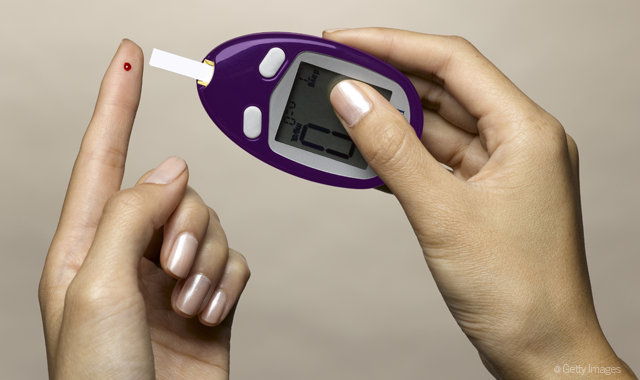Is there a bidirectional relationship between periodontitis and diabetes?
Whole-body wellness is increasingly becoming a priority for patients. Here’s what dental professionals need to know about the link between periodontitis and diabetes.

I recently returned from Manchester, England, where I attended my niece’s wedding. It’s been about four years since I’ve been abroad, but the trip gave me time to unwind, catch up with relatives and friends, and enjoy the beautiful English countryside.
Just like Americans, young adults and other generational groups in the U.K. are interested in health promotion and maintaining a youthful appearance. Over-the-counter products (OTC) are selling the “idea” of whole-body health promotion in their toothpastes and oral rinses that include, for example, Colgate® Total® Pro Gum Health Toothpaste and GSK’s Corsodyl Toothpaste for Bleeding Gums and Corsodyl Daily Mouthwash (active ingredient: 0.2% chlorhexidine). Corsodyl mouthwash is an OTC product in the U.K.
Whole-body wellness is a priority in the U.K. just as it is here - and for good reason. The number of U.K. residents diagnosed with diabetes has more than doubled in the last 20 years.1 In the U.S. in 2015, 9.4 percent of the population was living with diabetes, and a press release from 2017 indicated that 100 million Americans are living with diabetes or prediabetes.2
In the U.K. and U.S., periodontitis is known as a complication of diabetes. Research has demonstrated that people with diabetes are more likely to experience periodontitis if they’ve had poor blood sugar levels for a long period of time.3 In addition, the prevalence of periodontitis is estimated to be two to three times higher than in an otherwise healthy population.4
What about a bidirectional relationship between periodontitis and diabetes?

There’s a clear relationship between degree of hyperglycemia (high blood sugar) and the severity of periodontitis. A bidirectional relationship between diabetes and periodontal health is being researched with inconclusive outcomes.5
What does a bidirectional relationship really mean? In addition to the relationship between hyperglycemia and the severity of periodontitis, researchers have been trying to figure out how effective periodontal treatment is in controlling blood sugar levels (glycemic control) in people with diabetes compared to no active treatment or usual care.
In reviewing the literature on a bidirectional relationship between periodontitis and diabetes, it’s always important for the dental hygiene practitioner to be familiar with the evidence pyramid hierarchy before beginning a literature search. If unfamiliar with the concept and image of an evidence pyramid, study it here: https://academicguides.waldenu.edu/healthevidence/evidencepyramid.
The Cochrane Database of Systematic Reviews is considered the gold standard for systematic reviews and is closer to the top of the evidence pyramid. In 2015, The Cochrane Oral Health Group published a systematic review (SR) on the question of the effectiveness of various types of periodontal treatment for controlling blood sugar levels.5 Evidence was current up until the end of 2014. Thirty-five clinical trials were included and subjects received a type of periodontal treatment, either scaling and root planing (SRP) or SRP combined with other types of treatment like antimicrobials.
The evidence from 14 trials showed that SRP reduced blood sugar levels by 0.29 percent up to four months after periodontal care. After six months, there was no evidence that this glycemic reduction was sustained. The evidence from 21 trials that investigated different types of periodontal treatment failed to show that one treatment was better than another. Authors concluded there’s low quality evidence to support SRP for controlling blood sugar levels up to four months after receiving treatment. Ongoing, periodic periodontal maintenance is advised to maintain improvements in blood sugar levels.5
A 2014 report of the Diabetes and Periodontal Therapy Trial (DPTT) concluded that nonsurgical periodontal therapy (SRP) didn’t improve glycemic control in patients with Type 2 diabetes.6 The DPTT was a large, multicenter randomized clinical trial that was designed to study the effect of SRP on subjects with Type 2 diabetes and periodontitis. The periodontal treatment consisted of two or more sessions of SRP (with local anesthetic; duration of more than two-and-a-half hours) and follow-up periodontal supportive care. The trial results were contrary to what many people anticipated because they didn’t support previous smaller clinical trials and meta-analyses that demonstrated improvements in glycemic control as a result of SRP.5
To date, nonsurgical periodontal therapy (SRP) with and without adjunctive antimicrobial therapies should be performed to achieve the important benefit of improved oral health and not for the purpose of improving glycemic control in the vast majority of patients with Type 2 diabetes.5
As many of my readers already know, my lifelong passion as a writer includes mentoring hygienists about evidence-based dentistry and medicine. This preoccupation began while studying under my mentor, the late Michele L. Darby, RDH, MS, professor emeritus, who I continue to honor and respect to this day. Professor Darby envisioned a future where dental hygiene practitioners would apply evidence-based interventions to promote health and save costs in a collaborative, self-autonomous manner.7 Dental hygiene professionals who wish to continue their education in evidence-based dentistry (EBD) should watch the new EBD video tutorials on the American Dental Association website.
References:
1. https://www.diabetes.org.uk/about_us/news/diabetes-prevalence-statistics
2. https://www.cdc.gov/media/releases/2017/p0718-diabetes-report.html
3. Nascimento GG. et.al. Does diabetes increase the risk of periodontitis? A systematic review and meta-regression analysis of longitudinal prospective studies. Acta Diabetol 2018 Jul; 55(7): 653-667.
4. Mealey BL, Oates TW. American Academy of Periodontology. Diabetes mellitus and periodontal diseases. J Periodontol 2006;77:1289–303.
6. Engebretson, SP, Hyman, LG, Michalowicz, BS et al. The effect of nonsurgical periodontal therapy on hemoglobin A1c levels in persons with type 2 diabetes and chronic periodontitis: a randomized clinical trial. JAMA. 2013; 310: 2523–2532.
7. https://www.rdhmag.com/articles/print/volume-33/issue-7/columns/a-lifetime-of-leaning-in.html
Oral Health Pavilion at HLTH 2024 Highlighted Links Between Dental and General Health
November 4th 2024At HLTH 2024, CareQuest, Colgate-Palmolive, Henry Schein, and PDS Health launched an Oral Health Pavilion to showcase how integrating oral and general health can improve patient outcomes and reduce costs.